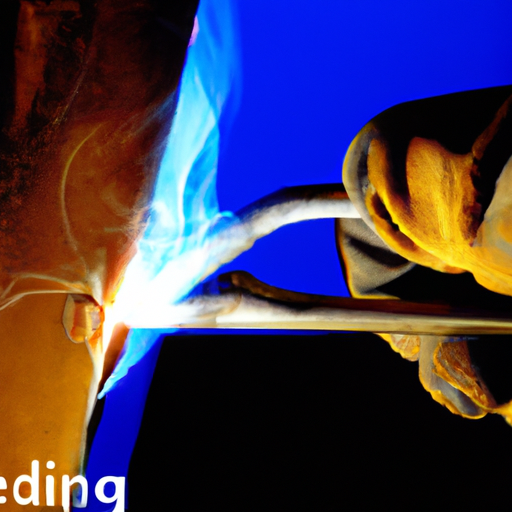Stick welding and MIG welding are both popular and widely used methods of joining metals. While the strength of a weld is crucial in many applications, determining which technique is stronger can be a matter of debate. In this article, we will explore the key differences between stick welding and MIG welding and shed light on whether stick welding is indeed stronger than MIG. By examining various factors such as weld penetration, weld quality, and the properties of each welding process, we aim to provide you with a comprehensive understanding of the topic. So, whether you’re a welding enthusiast or simply curious about these welding techniques, let’s dive into the world of stick welding versus MIG welding and find out which one comes out on top in terms of strength.
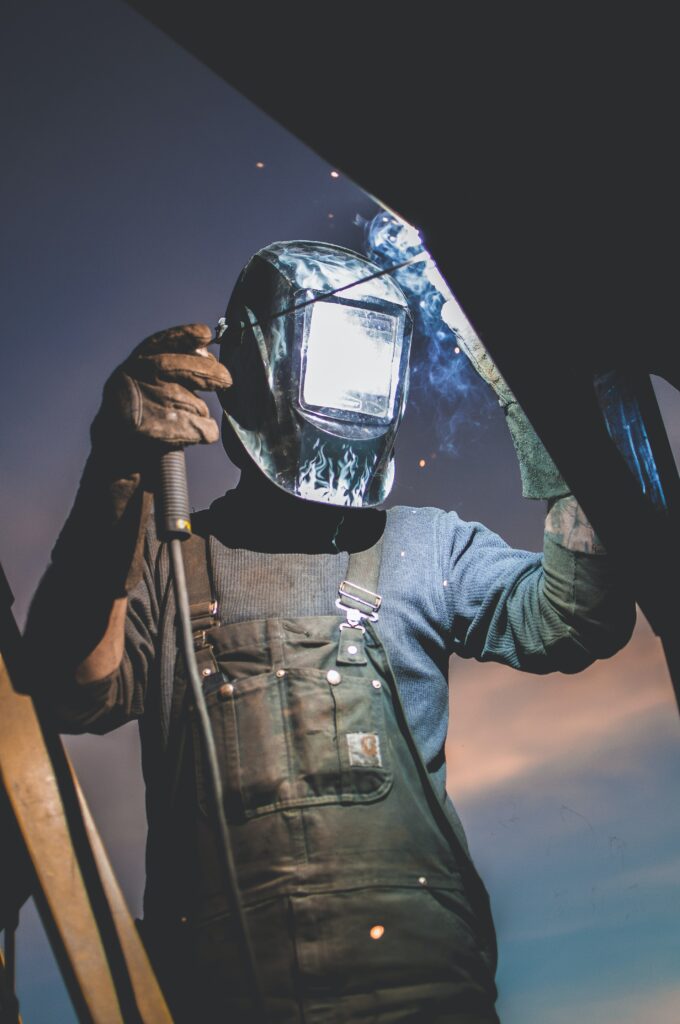
Understanding the Fundamentals of Stick Welding
Definition of stick welding
Stick welding, also known as shielded metal arc welding (SMAW), is a welding process that uses an electrode covered in flux to create an electric arc between the electrode and the workpiece. This arc melts the electrode and the base metal, creating a weld pool that solidifies to form a strong joint.
Common uses of stick welding
Stick welding is widely used in various industries, including construction, automotive, and manufacturing. It is commonly used for repairs, maintenance work, and fabrication tasks. Stick welding is particularly suitable for outdoor applications or in environments with windy conditions, as the flux coating provides protection against atmospheric contamination.
The process and technique of stick welding
Stick welding involves several steps to create a strong and durable weld. First, the electrode is selected based on the type of metal being welded. The electrode is inserted into the welding machine, and the power and amperage settings are adjusted. The welder then strikes an arc by touching the electrode to the workpiece and quickly withdrawing it to establish an electric arc.
Once the arc is established, the welder maintains a suitable arc length and travels along the joint, gradually melting the electrode and adding filler metal to the weld pool. The motion of the electrode and the manipulation of the arc voltage and amperage can influence the shape, penetration, and quality of the weld.
Understanding the Fundamentals of MIG Welding
Definition of MIG welding
MIG welding, or gas metal arc welding (GMAW), is a welding process that uses a continuous solid wire electrode and a shielding gas to create an electric arc between the wire and the workpiece. The arc heats the wire, which then melts and fuses with the base metal to create a strong weld joint.
Common uses of MIG welding
MIG welding is a versatile welding method widely used in industries such as automotive, manufacturing, and fabrication. It is often preferred for its speed, efficiency, and ease of use. MIG welding is suitable for both thin and thick metal sections, making it ideal for applications such as sheet metal fabrication, pipe welding, and structural steel work.
The process and technique of MIG welding
MIG welding involves several key steps to achieve a successful weld. First, the appropriate wire electrode and shielding gas are selected based on the specific materials being welded. The wire electrode is fed through a welding gun, and the power and wire feed speed settings are adjusted on the welding machine.
The welder then establishes an arc by pulling the trigger on the welding gun. The arc heats the wire and the base metal, causing the wire to melt and form a weld pool. The welder manipulates the welding gun to control the travel speed, angle, and distance from the workpiece, ensuring proper fusion of the wire and the base metal. The shielding gas protects the molten pool from atmospheric contamination, ensuring a clean and strong weld.
Comparing the Strength of Welds
What determines the strength of a weld?
The strength of a weld is influenced by several factors, including the welding process and technique, the choice of electrodes or wire, the quality of the joint preparation, and the properties of the base metals being welded. A well-executed weld should have adequate fusion between the filler metal and the base metal, minimal porosity or defects, and proper penetration into the joint.
Understanding tensile strength in welds
Tensile strength is a critical measure of a weld’s strength. It refers to the maximum amount of tensile force that a welded joint can withstand without breaking or failing. Welds with high tensile strength are more resistant to cracking or fractures under stress, making them more reliable and durable in structural applications.
Difference in strength between stick and MIG welds
Both stick and MIG welding can produce strong and reliable welds when performed correctly. The strength of the weld primarily depends on the skill and technique of the welder, as well as the suitability of the process for the specific application. In general, properly executed stick and MIG welds can achieve similar strength levels, although certain factors may influence the strength of each method.
Factors Influencing Strength of Stick Welding
Effect of electrode choice
The choice of electrode can significantly impact the strength and quality of stick welds. Different electrodes are designed for specific purposes, such as welding different types of metals or providing specific characteristics like high penetration or high deposition rates. Selecting the appropriate electrode for the base metal and application is crucial to achieving optimal strength in stick welding.
Impact of welding technique
Proper technique is essential to maximize the strength of stick welds. Controlling the arc length, maintaining consistent travel speed, and achieving adequate penetration are critical factors. Skillful manipulation of the electrode and efficient use of filler metal are key to producing strong and reliable stick welds.
Role of material thickness in stick welding
The thickness of the base metal being welded can affect the strength of stick welds. Thicker materials require higher heat input and greater penetration to achieve strong and durable welds. Adequate preheating of thick materials may be necessary to prevent the formation of excessive heat-affected zones or welding defects.
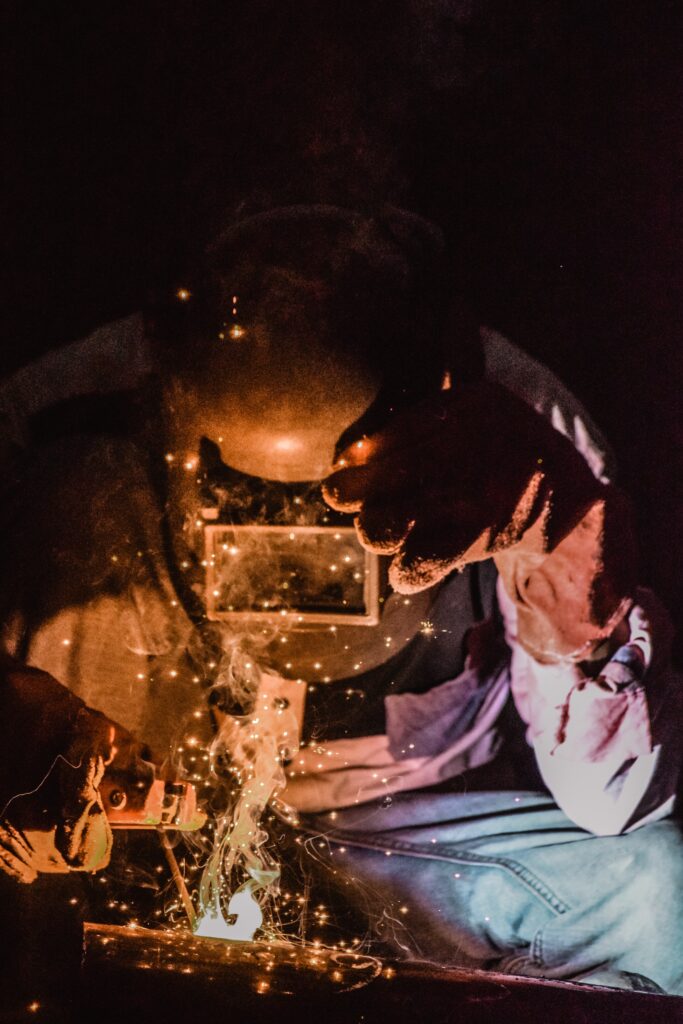
Factors Influencing Strength of MIG Welding
Effect of wire selection
Choosing the right wire for MIG welding can impact the strength and quality of welds. Different wires are designed for specific materials and applications, such as mild steel, stainless steel, or aluminum welding. The wire’s composition, diameter, and shielding gas compatibility can all affect the strength and integrity of MIG welds.
Impact of welding technique
Proper welding technique plays a crucial role in maximizing the strength of MIG welds. Consistent travel speed, maintaining the appropriate arc length, and ensuring good fusion are important factors. Skillful manipulation of the welding gun and precise control of wire feed speed contribute to the overall strength and quality of MIG welds.
Role of shielding gas in MIG welding
The choice and appropriate use of shielding gas can significantly impact the strength and quality of MIG welds. Shielding gases, such as carbon dioxide or argon-based mixes, protect the welding zone from atmospheric contaminants, preventing porous or weak welds. Selecting the right shielding gas for the specific material being welded is crucial for achieving optimal strength in MIG welding.
Common Misconceptions About Welding Strength
Is thicker always stronger?
Contrary to common belief, thickness alone does not determine the strength of a weld. While thicker materials may require specific heat input and techniques, such as preheating for effective welding, the quality of the weld mainly depends on the welder’s skill, proper technique, and selection of appropriate consumables. A well-executed weld on a thinner material can often be stronger than a poorly executed weld on a thicker material.
Is there a best welding method?
There is no universally best welding method for all applications. Stick welding and MIG welding each have their strengths and weaknesses, and the suitability of each method depends on factors such as the specific materials, joint configuration, desired finish, and available equipment. It is important to evaluate the requirements of each project and select the welding method that best suits the application.
Addressing common myths about welding strength
There are several misconceptions regarding welding strength that need to be addressed. For instance, some believe that all welds are inherently weak or that one welding method automatically produces stronger welds than others. These misconceptions can undermine the confidence in welding as a reliable joining method. It is crucial to recognize that with proper technique and selection of appropriate consumables, both stick and MIG welding can produce strong and reliable welds.
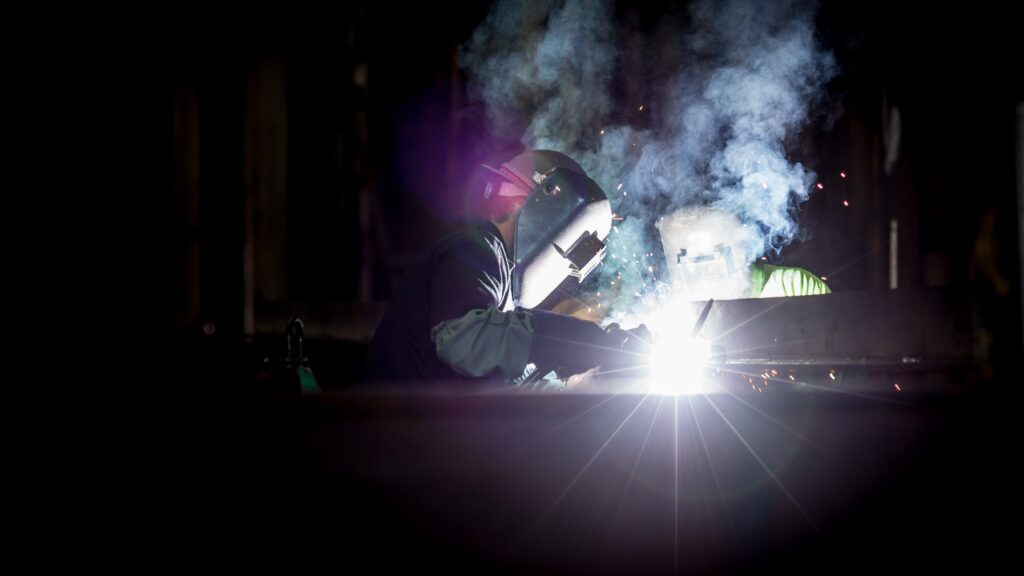
The Role of Skill Level on Welding Strength
Importance of skills in welding
Skill level plays a significant role in determining the strength of welds. Welders with proper training, experience, and knowledge of welding techniques and principles are more likely to produce high-quality, strong welds. Skillful manipulation of the welding equipment, precise control of heat input, and understanding of welding variables are vital for achieving optimal strength in stick and MIG welding.
Effect of skill level on stick welding strength
In stick welding, a welder’s skill level directly influences the strength of the weld. A skilled welder can effectively control the arc, maintain consistent travel speed, and ensure sufficient penetration, resulting in strong and reliable stick welds. On the other hand, an inexperienced or unskilled welder may produce weaker welds due to improper technique, inadequate penetration, or lack of control over the welding parameters.
Effect of skill level on MIG welding strength
Similarly, the skill level of a welder significantly affects the strength of MIG welds. A skilled MIG welder can maintain optimal wire feed speed, arc length, and travel speed, ensuring good fusion and achieving high-quality welds with excellent strength. In contrast, a less experienced welder may struggle to control these variables, leading to weaker or inconsistent MIG welds.
Practical Examples Comparing Strength of Stick and MIG Welding
Case study: Automotive industry
In the automotive industry, both stick and MIG welding are commonly used. For structural components or repairs that require high strength, stick welding is often preferred due to its ability to penetrate thicker materials and provide better overall joint integrity. However, MIG welding is commonly used for non-structural components, cosmetic applications, or thin sheet metal, where it allows for faster production rates and cleaner welds.
Case study: Construction industry
In the construction industry, stick welding is frequently utilized due to its versatility and reliability. It is commonly used for welding structural steel, heavy equipment repairs, and fabrication tasks that require high-strength welds. MIG welding, on the other hand, is often employed for lighter structural components, such as handrails or fences, where speed and ease of use are essential.
Case study: Manufacturing industry
The manufacturing industry benefits from both stick and MIG welding, depending on the specific application. Stick welding is often used for fabricating machinery, welding supports, or assembling heavy components that require strong and durable welds. MIG welding is favored for high-volume production lines, where speed, efficiency, and consistent quality are crucial.
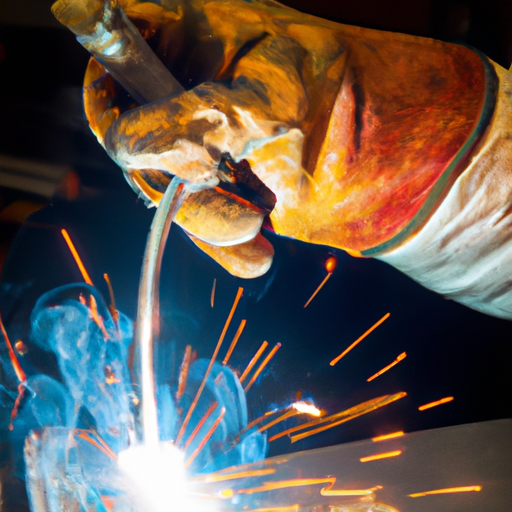
Choosing Between Stick and MIG Welding
Considerations beyond strength
When deciding between stick and MIG welding, strength is just one factor to consider. Other factors, such as the desired weld appearance, material thickness, joint configuration, budget, and available equipment and resources, should also be taken into account. It is important to assess the requirements of the project and choose the welding method that best aligns with the specific needs.
Understanding the right tool for the job
Each welding method has its strengths and limitations, making it important to understand the specific capabilities of stick and MIG welding. Stick welding is suitable for outdoor, field, or heavy-duty applications, offering excellent penetration and joint integrity. MIG welding excels in situations that require fast production rates, versatility, and cosmetic weld appearance.
When to use stick welding over MIG welding
Stick welding is often preferred when welding thick materials, working in outdoor or challenging environments, or when a deeper penetration or higher joint integrity is required. Its versatility and suitability for various metals, including cast iron and stainless steel, make it a valuable choice in many scenarios. Additionally, stick welding is more forgiving in terms of cleanliness and surface preparation.
When to use MIG welding over stick welding
MIG welding is suitable for thin-gauge materials, repetitive production work, and situations that require clean and cosmetic welds. Its fast welding speed, ease of use, and ability to handle a variety of materials, such as aluminum or stainless steel, make it an excellent choice for applications where efficiency and consistent quality are paramount.
Safety Considerations in Stick and MIG Welding
Hazards of stick welding
Stick welding involves several hazards that welders must be aware of. The electric arc produces intense heat, UV radiation, and sparks, which can cause burns, eye injuries, or fire hazards. The fumes and gases released during stick welding contain toxic substances, such as manganese, chromium, and carbon monoxide, which can be harmful if inhaled. It is essential to wear appropriate personal protective equipment (PPE), such as a welding helmet, gloves, safety glasses, and a respirator, to minimize the risk of injury or illness.
Hazards of MIG welding
MIG welding also presents specific hazards that require attention. The welding arc produces intense UV radiation and sparks, posing risks of burns and fire hazards. The shielding gas used in MIG welding may displace oxygen, potentially causing asphyxiation in confined spaces. Additionally, the fumes generated during MIG welding contain hazardous substances, such as metal oxides, which can be harmful if inhaled. Wearing proper PPE and ensuring good ventilation are critical for safe MIG welding practices.
Safety equipment and precautions for both methods
Regardless of the welding method chosen, certain safety measures are essential to ensure the well-being of the welder and those in the vicinity. Protective gear, including a welding helmet with a suitable shade, welding gloves, flame-resistant clothing, and safety glasses, should always be worn to protect against burns, sparks, and UV radiation. Adequate ventilation or local exhaust systems should be in place to remove welding fumes and maintain a clean breathing environment. Regular inspections of welding equipment, proper grounding, and adherence to safe operating procedures are vital for safe welding practices.
In conclusion, both stick welding and MIG welding can produce strong and reliable welds when performed correctly. The strength of the weld primarily depends on factors such as the skill level of the welder, the welding technique employed, the selection of appropriate consumables, and the specific requirements of the application. Each welding method has its advantages and limitations, and it is crucial to consider factors beyond strength when choosing between stick and MIG welding. Safety should always be a top priority, and welders must adhere to proper safety procedures and use appropriate personal protective equipment to ensure a safe working environment.
